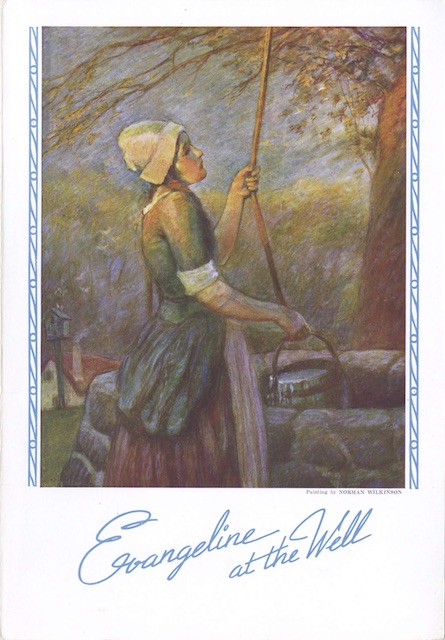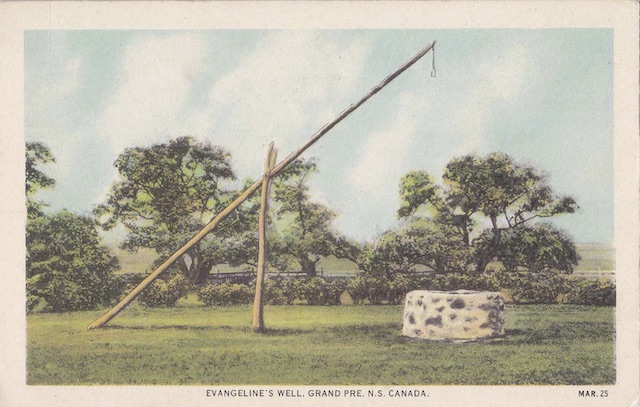This breakfast menu from an American Express Banner tour is dated August 8, 1940. The cover painting by Norman Wilkinson (who also painted the cover of this menu) is based on the famous poem by Henry Wadsworth Longfellow.
 Click image to download a 1.4-MB PDF of this menu.
Click image to download a 1.4-MB PDF of this menu.
The poem was meant to laud the faithfulness of a woman who was forcibly separated from her husband on their wedding day, but ended up celebrating the Acadian people who were forced from their land in what are now Canada’s maritime provinces in the mid-eighteenth century.
Although the poem, which is entirely fictitious, only once mentions a well as being outside the church where they were to marry, that well became a symbol of Evangeline’s faith and strength. In the 1920s, a Canadian Pacific subsidiary called the Dominion Atlantic Railway, which used an image of Evangeline on its logo, recreated an Acadian church in Grand Pré, Nova Scotia, and erected a statue of Evangeline near a well in front of that church.

Although not railroad issue, here is a postcard showing “Evangeline’s well,” which was recreated (or, actually, created since Evangeline never really existed) by the Dominion Atlantic Railway in the 1920s.
The back of the menu says nothing about the poem, the statue, or the well, but instead is an advertisement for travel to the Maritime provinces, especially via the rail lines, and steamships, and hotels owned by Canadian Pacific.
